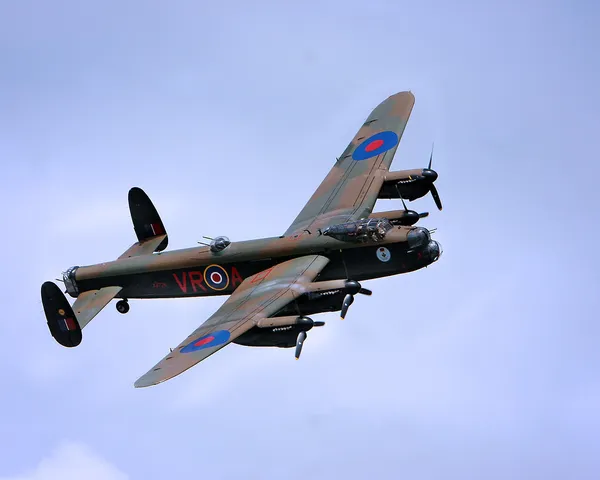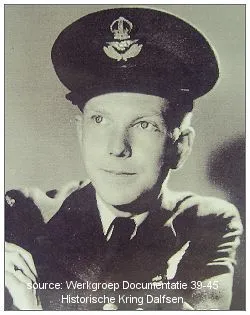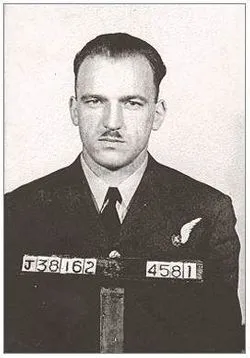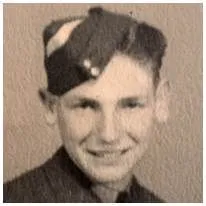MacFarlane, Henry Harrison
Evader 1944-09-23


Birth Date: 1925-April-25
Born: Cambusbarron, Stirling, Scotland
Home: Cambusbarron, Stirling, Scotland
Enlistment:
Enlistment Date: Unknown
Service
RAFVR
Unit
50 (B) Sqn- Squadron (RAF)
Sic Fidem Servamus Thus we keep faith
Base
RAF Skellingthorpe
Rank
Sergeant
Position
Sergeant
Service Numbers
1882137
Target
 Ladbergen Germany
Ladbergen Germany
Aided by Dutch Resistance Fighters, Sergeant Henry Harrison MacFarlane, in the company of crewmate Flying Officer Charles Dallyn Lucas (RAFVR) avoided capture and sheltered with various Dutch families in multiple locations. They later reunited with their pilot, Flight Lieutenant Oscar George Korpela (RCAF) until there were liberated in the town of Zelhem 1945-04-01 and was returned safe, to the UK
RAF Evaders The Comprehensive Story of Thousands of Escapers and Their Escape Lines, Western Europe, 1940-1945 by Oliver Clutton-Brock, page 382
Lancaster Mk.I ME700
Bombing Ladbergen Germany 1944-September-23 to 1944-September-23
50 (B) Sqn (RAF) RAF Skellingthorpe
50 Squadron (From Defence To Attack) RAF Skellingthorpe. Lancaster I aircraft ME 700 VN-V was intercepted on the return flight from a night operation to bomb targets in Ladbergen, Germany and shot down at 23:31 by night fighter pilot Hauptman Dietrich Schmidt of 8/NJG1. The bomber crashed at Welsum near Dalfsen in Overijssel, Netherlands with the loss of four aircrew members
Flying Officer John Murray Dunsmuir (RCAF), Flying Officer Angus Beverley Harvey (RCAF), Flight Sergeant Raymond Larcome (RAFVR) and Flight Sergeant Eric Henry Tunnell (RAFVR) were all killed in action
Flying Officer Oliver George Korpela (RCAF), Flying Officer Charles Dallyn Lucas (RAFVR) and Sergeant Henry Harrison MacFarlane (RAFVR) all survived and avoided capture as Evaders
Addendum 2: According to the pilot, Flying Officer Korpela (RCAF), they had dropped their bombs and were on the way home when they realized they were off course. They were attacked by a German fighter and the Lancaster burst into flames. The pilot soon realized the aircraft was beyond saving: the plane was burning and full of smoke; the navigator andwireless operator were dead; the intercom was out of order and the air-gunners could not be reached either physically nor by intercom. The order was given to abandon the aircraft, the flight engineer and the bomb aimer complied and shortly after Flying Officer Korpela also jumped. Flying Officer O. Korpela (RCAF), Sgt. H. MacFarlane (RAF), and Sergeant C. Lucas (RAF) were Evaders. Detail provided by N. Murphy, Windsor, Ontario
Nachtjagd Combat Archive 1944 Part 4 24 July - 15 October by Theo Boiten, page 86
Lancaster ME700
Avro Lancaster

Canadian Warplane Heritage Museum
The Avro Lancaster is a British Second World War heavy bomber. It was designed and manufactured by Avro as a contemporary of the Handley Page Halifax, both bombers having been developed to the same specification, as well as the Short Stirling, all three aircraft being four-engined heavy bombers adopted by the Royal Air Force (RAF) during the same wartime era.
The Lancaster has its origins in the twin-engine Avro Manchester which had been developed during the late 1930s in response to the Air Ministry Specification P.13/36 for a capable medium bomber for "world-wide use". Originally developed as an evolution of the Manchester (which had proved troublesome in service and was retired in 1942), the Lancaster was designed by Roy Chadwick and powered by four Rolls-Royce Merlins and in one version, Bristol Hercules engines. It first saw service with RAF Bomber Command in 1942 and as the strategic bombing offensive over Europe gathered momentum, it was the main aircraft for the night-time bombing campaigns that followed. As increasing numbers of the type were produced, it became the principal heavy bomber used by the RAF, the Royal Canadian Air Force (RCAF) and squadrons from other Commonwealth and European countries serving within the RAF, overshadowing the Halifax and Stirling. Wikipedia
 Escaper List
Escaper List Library and Archives Canada Service Files (may not exist)
Library and Archives Canada Service Files (may not exist)




 Lancaster Bomber
Lancaster Bomber Wikipedia
Wikipedia